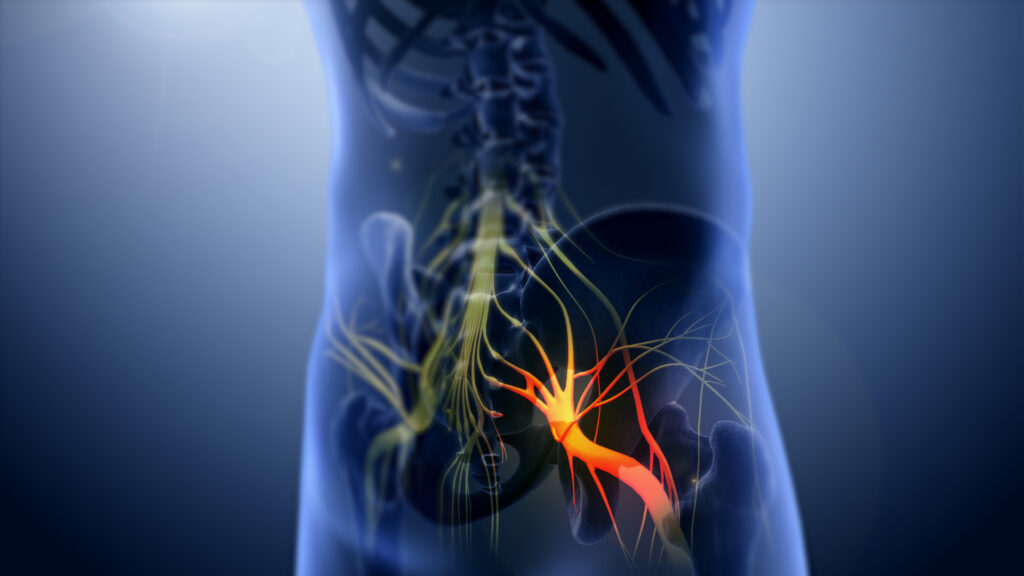Sciatica is a medical condition that involves pain that radiates along the path of the sciatic nerve. The sciatic nerve is the longest nerve in the body, running from the lower back down through the buttocks and the back of each leg. Sciatica is typically caused by compression or irritation of the sciatic nerve, often due to a herniated disc, spinal stenosis, or other spinal conditions.
Physical therapists play a crucial role in treating patients with sciatica. Here’s how they typically approach treatment:
1. Assessment and Diagnosis: The physical therapist will first assess the patient’s condition to determine the underlying cause of the sciatica and its severity. This may involve a physical examination, a review of medical history, and possibly diagnostic tests such as imaging studies.
2. Pain Management: The initial goal of treatment is to manage pain. This may involve various modalities, such as ice or heat therapy, electrical stimulation, ultrasound, and manual techniques, to alleviate discomfort.
3. Stretching and Strengthening Exercises: Physical therapists design specific exercises to improve flexibility and strengthen the muscles that support the spine and the affected leg. These exercises can help alleviate pressure on the sciatic nerve and promote healing.
4. Manual Therapy: Therapists may use manual techniques like spinal manipulation, joint mobilization, or soft tissue massage to relieve muscle tension and improve the alignment of the spine.
5. Posture and Body Mechanics: Patients are educated on proper posture and body mechanics to reduce the strain on the lower back and avoid exacerbating the condition.
6. Education: Physical therapists provide valuable information on how to manage and prevent sciatica in the future. This includes guidance on ergonomics, lifestyle changes, and exercises that can be performed at home.
7. Modalities: In some cases, therapists may use additional modalities like heat or cold therapy, ultrasound, or transcutaneous electrical nerve stimulation (TENS) to aid in pain relief and healing.
8. Gradual Progression: Treatment plans are typically tailored to the individual patient’s needs and progress. As the patient improves, the physical therapist may adjust the treatment plan to continue strengthening and rehabilitation.
9. Lifestyle Recommendations: Physical therapists may provide advice on lifestyle changes, including weight management, regular exercise, and proper nutrition, which can contribute to overall spinal health.
It’s important to note that the specific treatment plan may vary based on the patient’s unique condition and needs. Patients should work closely with their physical therapist to develop and follow a plan that suits them best. Additionally, some severe cases of sciatica may require surgical intervention, which is typically considered after conservative treatments, including physical therapy, have been exhausted or proven ineffective.

